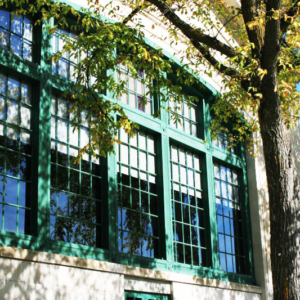Commercial paint projects involve a range of activities and considerations to ensure a successful and professional outcome. From initial planning to final execution, several key factors come into play, all aimed at achieving the desired aesthetic appeal, protection, and longevity of the painted surfaces. Let’s explore the various aspects involved in commercial paint projects.
- Assessment and Planning: Before beginning any commercial paint project, a thorough assessment of the space is essential. This involves evaluating the current condition of the surfaces, identifying any repair or preparation needs, determining the scope of work, and establishing a timeline and budget.
- Surface Preparation: Proper surface preparation is crucial for achieving a durable and flawless paint finish. This typically involves cleaning the surfaces, removing dirt, grease, and loose paint, repairing cracks or damages, and ensuring a smooth and even substrate for paint application.
- Color Selection and Design: Choosing the right colors and design schemes is an important aspect of commercial paint projects. Factors such as branding, target audience, and the purpose of the space play a role in determining the color palette. Design considerations like accent walls, murals, or custom graphics are also taken into account to enhance the aesthetics and convey the desired message.
- Material Selection: Selecting appropriate paint and coating materials is vital for commercial projects. Factors such as the type of surface, expected wear and tear, environmental conditions, and maintenance requirements influence the choice of paint. High-quality and durable paints are often preferred to ensure longevity and reduce the need for frequent repainting.
- Safety and Compliance: Safety measures are essential during commercial paint projects. Contractors must adhere to safety regulations, use proper equipment, and employ appropriate ventilation and protective gear. Compliance with environmental standards and local regulations, such as proper disposal of paint waste, is also crucial.
- Execution and Application: Skilled painters execute the painting process, ensuring even coverage, precise cutting-in, and smooth finishes. Techniques like brushing, rolling, and spraying are employed based on the project requirements. Attention to detail is essential to avoid paint drips, streaks, or other imperfections.
- Cleanup and Restoration: Once the paint application is complete, the area needs to be cleaned and restored to its original state. This involves removing any paint residues, protecting furniture or fixtures, and ensuring a tidy and presentable space.
- Quality Assurance: Commercial painting projects often involve inspection and quality assurance measures. Contractors may conduct thorough checks to ensure the final outcome meets the desired standards. Touch-ups or corrections may be required to address any imperfections.
- Maintenance and Longevity: To maximize the longevity of the paint job, routine maintenance is crucial. This may involve regular cleaning, touch-ups, or periodic repainting based on wear and tear.
In conclusion, commercial paint projects encompass a comprehensive process involving assessment, planning, surface preparation, color selection, material choice, safety compliance, execution, cleanup, quality assurance, and maintenance. By paying attention to each of these aspects, commercial spaces can be transformed into visually appealing, well-protected environments that leave a positive impression on clients, customers, and employees alike.

